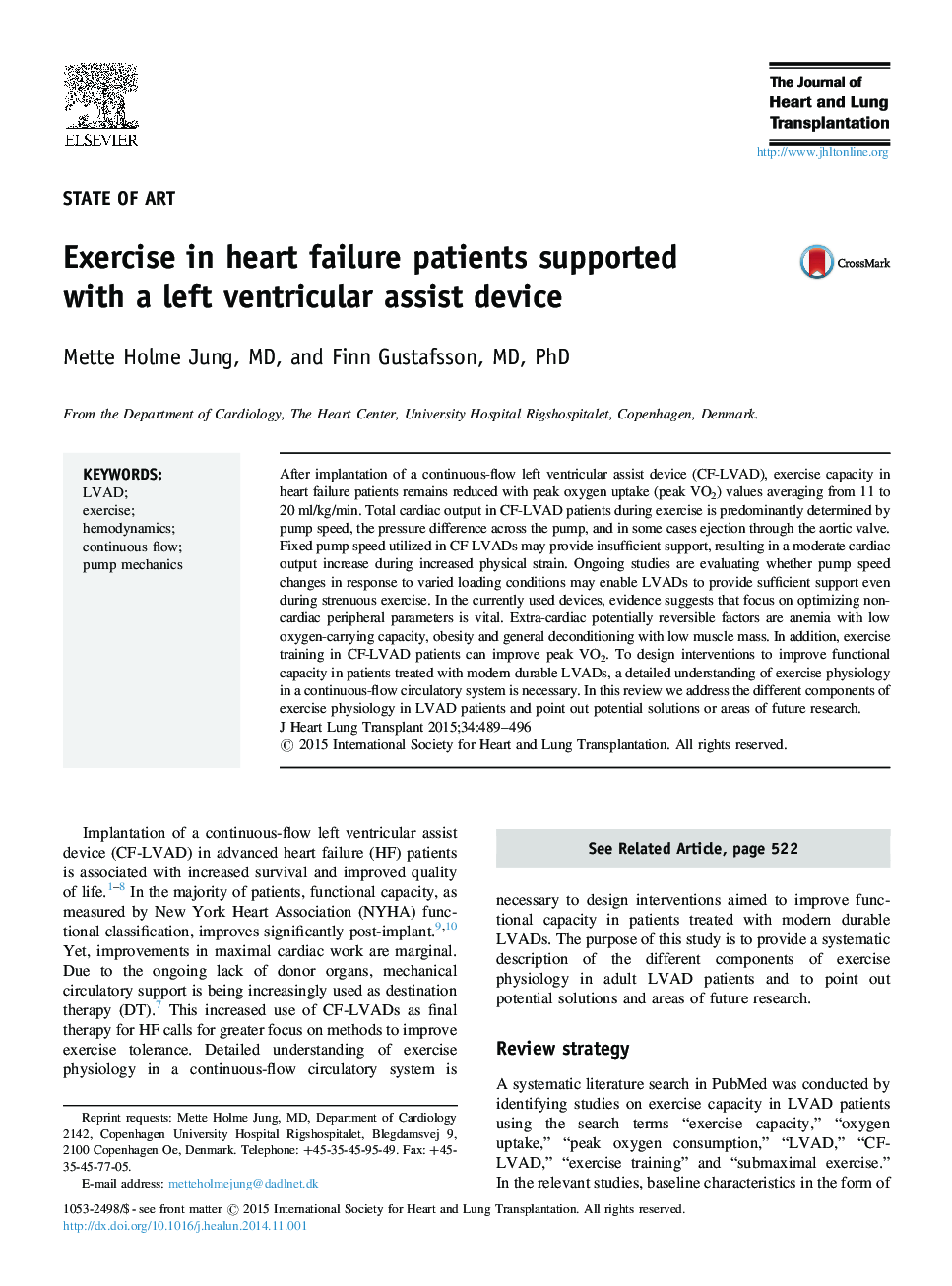| Article ID | Journal | Published Year | Pages | File Type |
|---|---|---|---|---|
| 2969925 | The Journal of Heart and Lung Transplantation | 2015 | 8 Pages |
Abstract
After implantation of a continuous-flow left ventricular assist device (CF-LVAD), exercise capacity in heart failure patients remains reduced with peak oxygen uptake (peak VO2) values averaging from 11 to 20 ml/kg/min. Total cardiac output in CF-LVAD patients during exercise is predominantly determined by pump speed, the pressure difference across the pump, and in some cases ejection through the aortic valve. Fixed pump speed utilized in CF-LVADs may provide insufficient support, resulting in a moderate cardiac output increase during increased physical strain. Ongoing studies are evaluating whether pump speed changes in response to varied loading conditions may enable LVADs to provide sufficient support even during strenuous exercise. In the currently used devices, evidence suggests that focus on optimizing non-cardiac peripheral parameters is vital. Extra-cardiac potentially reversible factors are anemia with low oxygen-carrying capacity, obesity and general deconditioning with low muscle mass. In addition, exercise training in CF-LVAD patients can improve peak VO2. To design interventions to improve functional capacity in patients treated with modern durable LVADs, a detailed understanding of exercise physiology in a continuous-flow circulatory system is necessary. In this review we address the different components of exercise physiology in LVAD patients and point out potential solutions or areas of future research.
Related Topics
Health Sciences
Medicine and Dentistry
Cardiology and Cardiovascular Medicine
Authors
Mette Holme MD, Finn MD, PhD,
